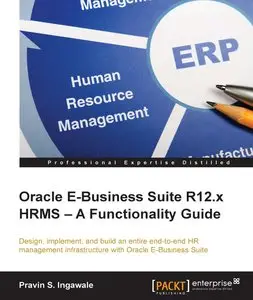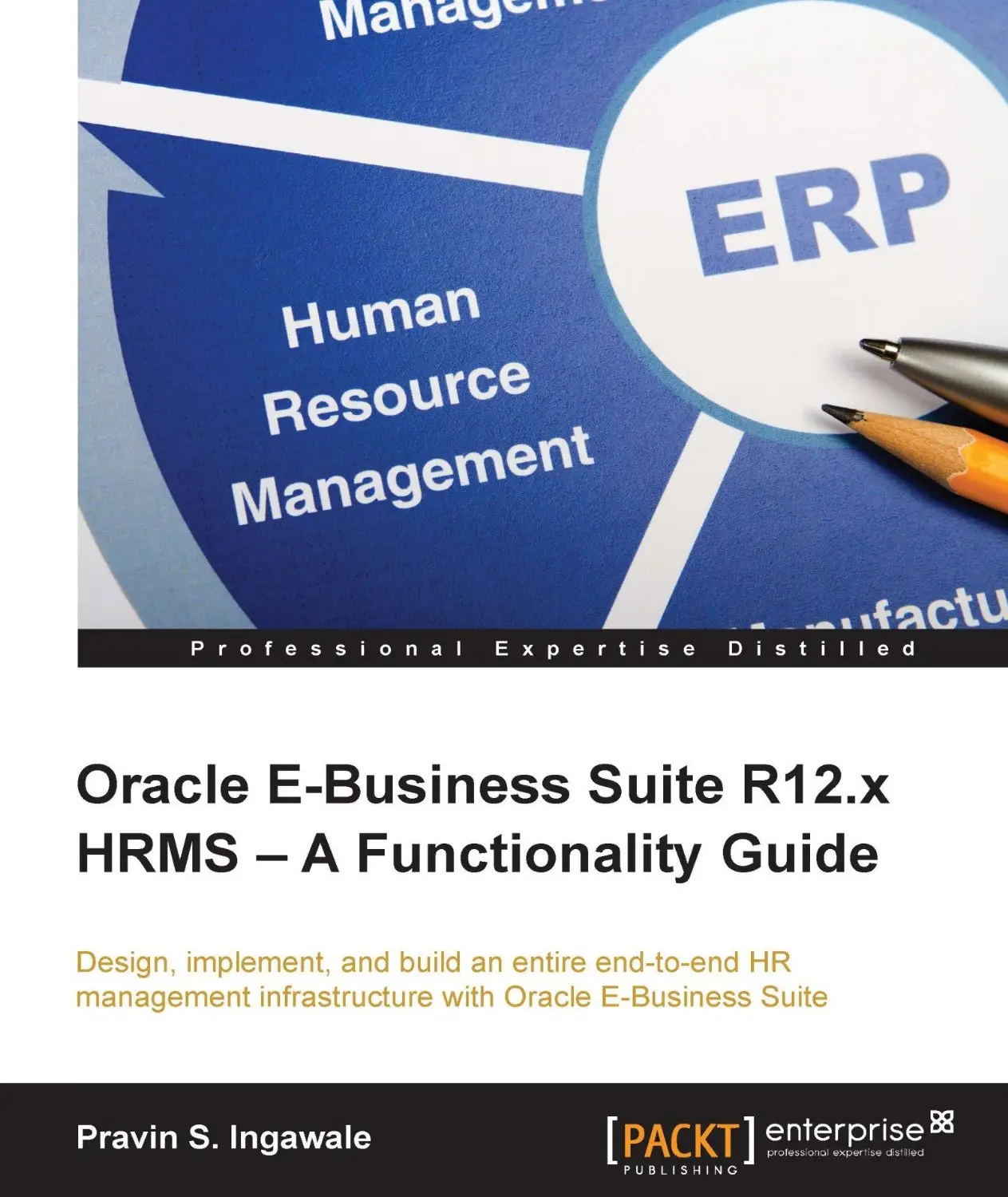Oracle E-Business Suite R12.x HRMS - A Functionality Guide by Pravin S. Ingawale
English | 28 Jun. 2015 | ISBN: 1782177388 | 222 Pages | EPUB/MOBI/PDF (True) | 53.39 MB
English | 28 Jun. 2015 | ISBN: 1782177388 | 222 Pages | EPUB/MOBI/PDF (True) | 53.39 MB
Oracle's E-Business Suite Human Capital Management enables organizations to architect a global foundation for HR data and improved business processes.
Design, implement, and build an entire end-to-end HR management infrastructure with Oracle E-Business Suite
About This Book
Learn about concepts such as system administration, work structures, and people management in Oracle Apps HRMS
Learn to automate the key HR functions in Oracle Apps HRMS
A step-by-step guide to creating your own set of implementation rules and to help you in following the best practices in the industry to deliver the best solution to customers
Who This Book Is For
If you are a developer or functional consultant of Oracle's E-Business Suite HRMS who wants to learn the logical flow of the processes involved in human resources and where Oracle HCM fits into the overall enterprise structure, then this book is for you. Basic knowledge of Oracle's E-Business Suite components is essential.
What You Will Learn
Learn about the architecture of Oracle HRMS
Define value sets, key flexfields, and descriptive flexfields
Configure the payroll and provide knowledge of setting up payroll earnings and deductions in an organization
Identify work structure components and their usage
Create business groups, locations, and organizations
Define the unique structure of business entities such as jobs, positions, and grades
In Detail
The book starts by introducing Oracle Application E-Business Suite, its architecture, and how to set up the preliminary components such as roles, groups, and profile options. As you progress through the chapters, you'll learn to define common data from an enterprise perspective, such as the unique structures for jobs, positions, job groups, and other business entities. As we move from learning the core HR structures, you'll learn to implement people management concepts such as maintaining personal information, identifying assignments, managing assignments of personnel, changing assignments, and terminating an assignment or employee. By the end of this book, you will have a thorough knowledge of implementing a fully functional HR system based on strategic business needs, along with a detailed understanding of the key functions and benefits of Oracle HCM.



